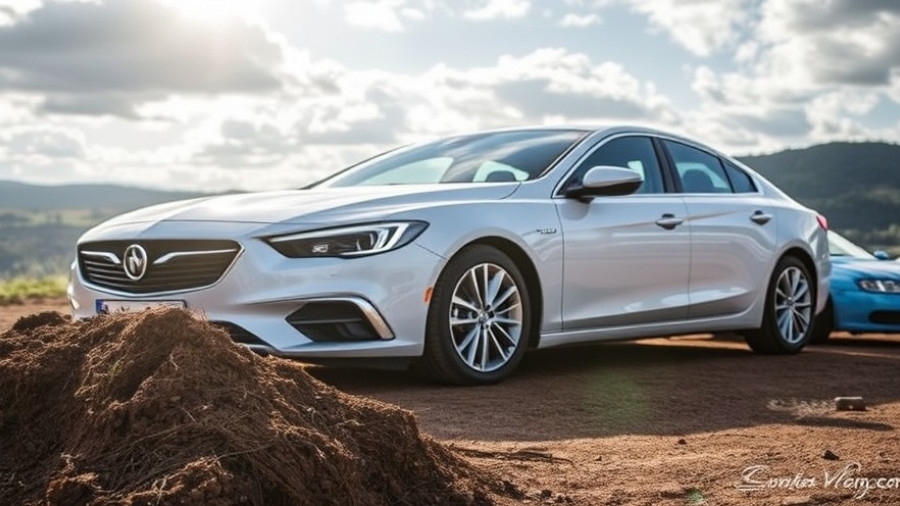
Is the European Car Industry at a Crossroads?
The European automotive sector, a cornerstone of the region's economy, making up about 7% of the EU's GDP and providing 13.8 million jobs, stands at a potential turning point as it faces a critical transition towards electric vehicle (EV) production. The European Automobile Manufacturers’ Association (ACEA) has taken significant measures to shield local carmakers from competition—most notably from China—by lobbying for protective tariffs and a delay in regulatory emissions standards. But is this an effective strategy? Many industry analysts believe these attempts to stabilize the traditional market are actually placing European carmakers in a precarious position.
The Danger of Hesitation in Electrification
Recent developments indicate that while European manufacturers seek protection, they may be digging their own grave in the process. A report by the Jacques Delors Centre echoes the sentiment that an aggressive shift towards electrification is essential. Stopping or even slowing down the transition to battery electric vehicles (BEVs), as suggested by ACEA in their pleas, could worsen disruptions and reinforce reliance on declining internal combustion engine markets. The consequences of this hesitance are already evident, with sales of BEVs in the EU lagging behind global growth rates—especially when compared to the meteoric rise in markets like China, where BEV uptake is surging.
Economic Pressures Amidst Global Competition
As the EU adapts to the realities of the EV revolution, pressures are mounting from global competitors, particularly those manufacturing in China. An ACEA report emphasized that the technology and supply chain investments seen in China are lightyears ahead of Europe. European manufacturers now face crushing competition both at home and in key international markets. Chinese manufacturers are rapidly innovating and efficiently scaling production, prompting fears among legacy carmakers that they could be left behind, causing significant drops in market share and profits.
Structural Challenges and the Supply Chain Crisis
The transition to electrification is not an easy road for Europe. Inadequate infrastructure, including public charging networks and supply chains for critical components like batteries, are major obstacles. Recent estimates suggest a need for around €172 billion investment in charging infrastructure alone by 2030 to meet increasing demand, yet current administrative delays are stifling progress. Meanwhile, the price of batteries is projected to fall significantly by 2030, offering an opportunity for profitability, but manufacturers must brace for a phased shift to BEVs if they want to capitalize on this drop in costs without sacrificing quality.
Policy Signals and Consumer Confidence
Compounding these supply chain issues are inconsistent policy signals that create a climate of uncertainty. Recent shifts in regulatory frameworks and state incentives contribute to confusion among consumers, diminishing confidence in the EV market. As consumer preferences evolve, European automakers must not only compete on price but also on transitioning their model lineups to meet the upcoming regulations mandating a full ban on internal combustion engines by 2035. The ACEA emphasizes that revitalizing consumer confidence through stable policies is essential to unlock the market's potential.
Opportunities for Revitalization
Yet, despite these pressing challenges, Europe is not destined for decline. As evidenced by successful strategies from nations like Poland, Hungary, and France, coherent industrial policies and robust investment in new technologies can transform Europe’s automotive landscape. Innovative industrial strategies that promote competitive advantages in manufacturing and supply can re-establish Europe as a critical player in the global automotive arena. Moreover, aligning governmental policies to simplify investments in BEV technologies will facilitate a smoother transition and safeguard existing jobs while creating new opportunities within the expanding EV ecosystem.
The Road Ahead: A Coordinated EU Strategy
Ultimately, Europe's automotive future does not have to be bleak; it requires collaborative action across member states and a clear vision towards sustainable practices. If European manufacturers can prioritize strategic understandings and respond to market demands swiftly, the continent could emerge with a revitalized automotive sector poised for success in the electric vehicle marketplace.
With a proactive and coordinated strategy, Europe’s car industry can shift into high gear and reclaim its competitive edge. However, the clock is ticking, and the upcoming years will prove crucial for ensuring its survival in an increasingly electrified market.
As we reflect on the challenges ahead, it becomes critical that both consumers and manufacturers engage in the dialogue of the future of mobility. Investment in research, infrastructure, and innovation must take precedence to secure the prosperity of Europe’s automotive industry.
For more insights on the transformation of the automotive landscape and the implications for local economies, explore our resources and stay informed.
 Add Row
Add Row  Add
Add 




Write A Comment